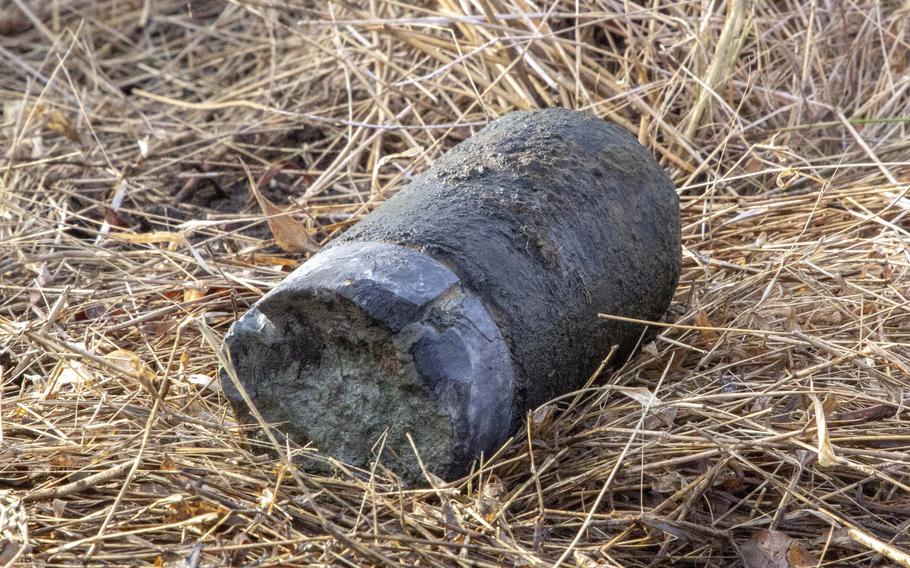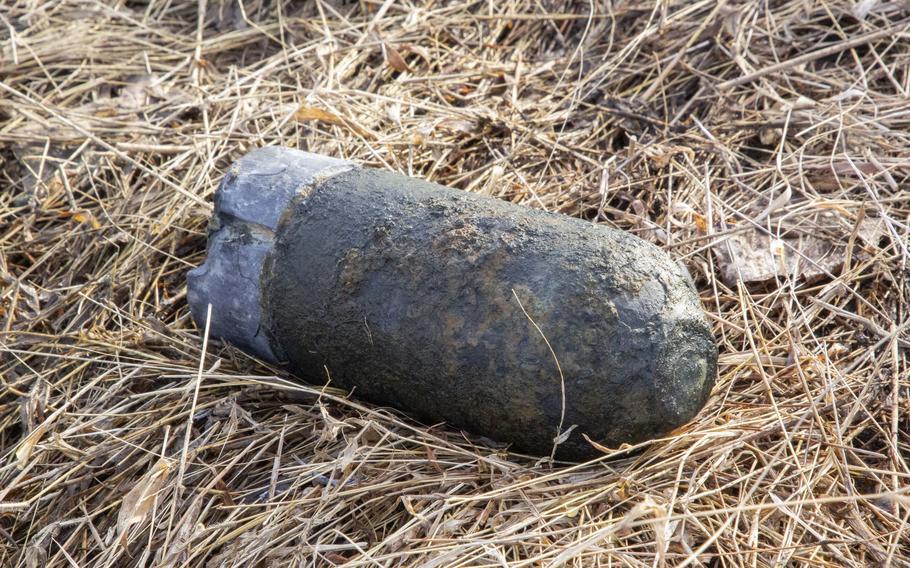
An unexploded three-inch shell casing dating to the Civil War lies on the ground after being unearthed at Gettysburg National Military Park, Feb. 8, 2023. Soldiers with the 55th Ordnance Disposal Company gently washed off the mud to allow park staff to photograph the shell. (Gettysburg National Military Park)
An unexploded 3-inch shell casing from the Civil War stopped traffic this week in Gettysburg while U.S. military technicians investigated the Pennsylvania battlefield finding.
U.S. Army explosive ordnance disposal soldiers, who made a 92-mile journey from their headquarters at Fort Belvoir, Va., removed and destroyed the round, which was discovered during an archaeological dig Wednesday at Gettysburg National Park.
“This type of munition was historically used during the Civil War and most likely came from the Battle of Gettysburg in 1863,” Capt. Matthew Booker, the commander of the 55th Ordnance Company, said in a statement.
The round was identified by Staff Sgt. Alexander Campbell, the EOD team leader, as a 3-inch Burton case shot, which was commonplace at the time.
It was found by Steven Brann, a contract archaeologist who was sweeping the Little Round Top area under renovations with a metal detector Wednesday.
“He laid it gently on the ground, took a picture of it and ran for the hills,” said Jason Martz, spokesman for Gettysburg National Military Park, according to a CNN report.

An unexploded three-inch shell casing dating to the Civil War lies on the ground after being unearthed at Gettysburg National Military Park, Feb. 8, 2023. Army explosive ordnance disposal soldiers from Fort Belvoir, Va., removed and destroyed the round. (Gettysburg National Military Park)
Concern over the tiny 160-year-old casing was significant enough that the National Park Service closed nearby roads after the discovery.
Campbell determined that the item was safe to transport to a disposal area and the roads were subsequently reopened, the Army said.
The Battle of Gettysburg was the bloodiest of the Civil War, with more than 51,000 estimated dead and wounded over its three-day span.
The find comes about six months after a 3-inch Hotchkiss shell was found lodged in a historic building in the Gettysburg park, the Army said.
Gettysburg is one example of battlefields around the world that continue to bear the hazards of war long after the outcomes have been decided.
In February 2022, archaeologists found an unexploded 10-pound Civil War artillery shell at Kennesaw Mountain National Battlefield Park in Georgia, according to the National Park Service.
Meanwhile, about 2,000 tons of unexploded bombs and other munitions are found each year in Germany, which was heavily bombarded by Allied forces during World War II.
In December, a phosphorus bomb was accidently struck during construction work at the U.S. European Command headquarters in Stuttgart, which resulted in the release of poisonous gas.
A German explosive ordnance disposal team managed to safely remove the bomb without incident.